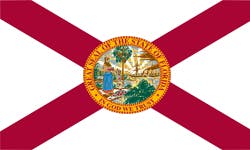If you're a Florida resident who is planning to sign up for Medicare, or you're helping a loved one through the process, you'll want to learn more about Medicare Part D prescription drug coverage.
What is Medicare Part D?
You're probably already familiar with Medicare Parts A and B, also known as Original Medicare. These two parts cover your hospital stays (Part A), and doctor visits and other outpatient services (Part B). Unfortunately, Original Medicare does not cover prescription medications except under extremely limited circumstances. Typically, this means provider-administered medications received in a hospital setting.
Prescription drug coverage under Parts A and B does not apply to regular medication prescribed by your Florida family physician for medical needs such as managing blood pressure, blood sugar, and cholesterol.
Medications can be incredibly expensive, and the costs associated with most prescriptions add up very quickly. So, what can you do to preserve your finances and enjoy your retirement while still obtaining much-needed medication? Sign up for a Medicare Part D plan in Florida.
Rather than paying full price for your prescriptions, your Medicare Part D plan covers the majority of your drug costs. Your out-of-pocket costs vary depending on whether you choose a standalone prescription drug plan (PDP) or a Medicare Advantage plan that includes Part D coverage, known as an MA-PD.
Getting Medicare Part D prescription drug coverage in Florida
There are two ways to sign up for Medicare Part D:
- Enroll in a standalone Medicare Part D plan to go with your Original Medicare coverage or Advantage plan that doesn't include prescription drug coverage
- Sign up for a Medicare Advantage Prescription Drug plan, also known as Medicare Part C
Both standalone Part D plans and Medicare Advantage Prescription Drug plans are offered by private insurers that have contracted with Medicare.
Medicare Advantage plans must offer the same coverage provided by Original Medicare. However, many Florida Medicare Advantage plans also offer extra benefits that you don't get with Original Medicare, such as prescription drug coverage, routine dental care, and fitness programs.
Whether you choose your Part D plan as a standalone option or as an MA-PD plan, both options include monthly premiums, deductibles, and copays. These costs vary from plan to plan.
Which Part D plan is the best?
Which Part D plan is best depends on your unique situation. But no matter which Part D plan you choose, you need to do some homework to determine what the plan provides.
Every Part D prescription drug plan in Florida has a formulary, which is the list of prescription drugs covered by the plan. It is essential to check the formulary to make sure it includes all of the medications you take.
It is also important to note that formularies can change throughout the year. If this occurs, your insurance company will alert you. If there is no alternative medication in the new drug formulary, your provider can help you request an exception. Then, when Annual Enrollment starts, you may sign up for a new Part D plan.
Do I need Part D prescription drug coverage?
Enrolling in a Part D prescription drug plan in Florida is not mandatory. However, if you don't sign up for it as soon as you're eligible, you might have to pay a late-enrollment fee on top of your monthly premium when you do sign up for Part D coverage. You will owe this late fee for the entire time you have Medicare Part D coverage.
What do Part D plans cost?
All Part D plans come with a monthly premium. In addition, your out-of-pocket costs include an annual deductible and copays or coinsurance at the time of purchase. Until you meet your annual deductible, you are responsible for 100% of your prescription drug costs.
After meeting your yearly deductible, you enter the initial coverage phase. During this time, you will pay a copay based on tiered pricing. Medications on lower tiers cost less than those on the higher tiers. On all tiers, though, you pay 25% of the medication's cost while your Part D plan pays the remaining 75%.
Once you reach the limit on your initial coverage phase, you enter the coverage gap, also known as the donut hole.
During the coverage gap phase, you continue paying 25% of costs. However, the remaining 75% is now shared by your Part D plan and the drug manufacturer. You remain in the donut hole until your out-of-pocket plus the manufacturer's spending meet the yearly maximum ($8,000 in 2024). Once this happens, you enter the catastrophic coverage phase.
During the catastrophic coverage phase, you pay only 5% of prescription drug costs for the rest of the year.
Even though there will still be costs associated with your prescription medications, purchasing a Part D plan will dramatically reduce your overall expenses and help keep your hard-earned savings sitting in your retirement account.
